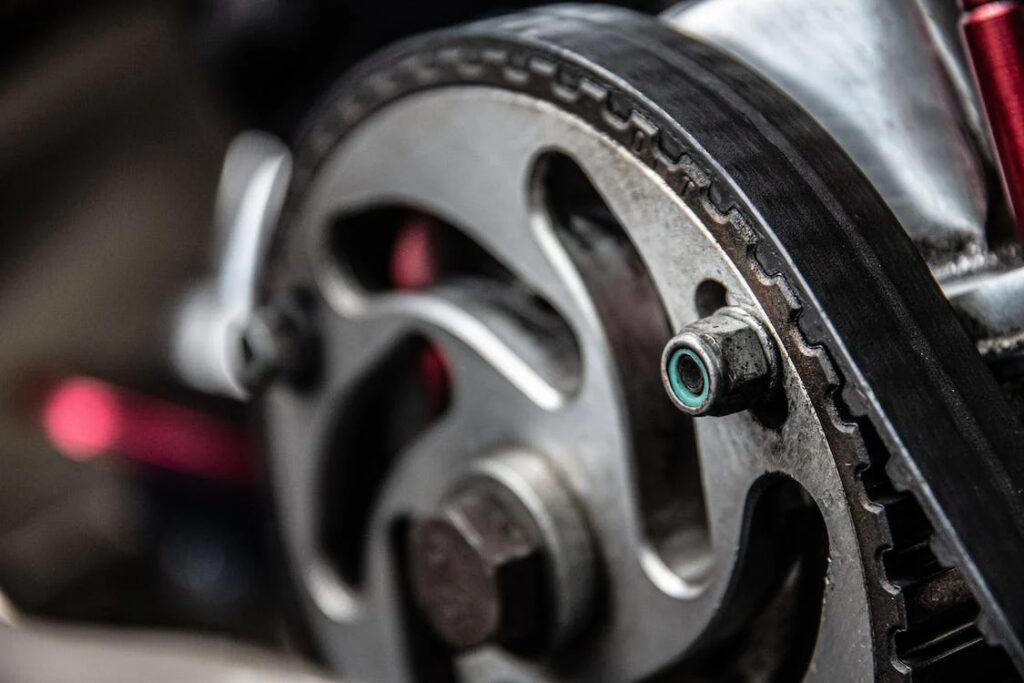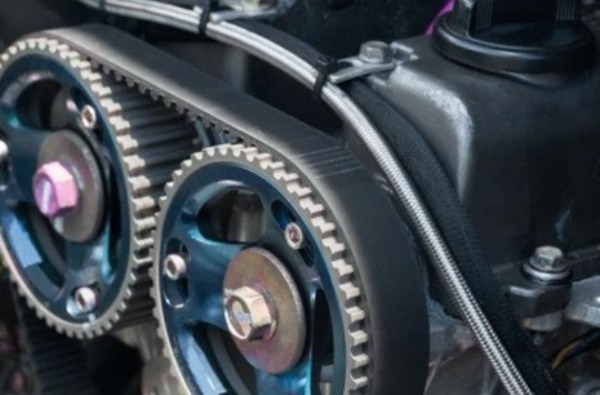No Widget Added
Please add some widget in Offcanvs Sidebar
Please add some widget in Offcanvs Sidebar
Cars are heavy machines with multiple components under the hood working together in harmony to provide you with the smoothest of rides. However, despite appearing as a sturdy piece of machinery, damage to a single vital component can result in your automobile’s performance drastically dropping below optimal levels.
One such component is the camshaft, which could lead to engine failure if damaged. So, it’ll be best to nip this problem in the bud by having a professional mechanic repair or replace this piece early.
Call Nationwide Report’s Car Genius™ from RepairPal at 1-877-671-3040 from 9am-6pm ET, Monday through Friday.
Home » Resource Center » Camshaft Repairs: Top Signs that You Need One
This component is a crucial part of a car’s engine. It’s a rotating shaft that’s curated from hardened steel or iron cast. A vehicle’s camshaft aims to regulate the exhaust and intake valves in the cylinder head, and it achieves this feat through its rotation.
The camshaft, in simple terms, is a shaft with attached cams, and it’s different from a crankshaft that transmits the energy for the former to rotate.
Here are the two basic types of camshafts available in today’s automobile market:
The flat tappet camshaft is the oldest format and was invented over four decades ago. This camshaft format is relatively cheap, can provide sufficient power, and is easy to maintain.
Roller camshafts rank as more efficient than flat tappet camshafts but cost more. This camshaft form provides improved power and reduced friction. Moving on, roller camshafts don’t require break-ins like their “flat tappet” counterparts and are more durable.
It might seem all ups for the roller camshafts. However, their comparatively higher price and maintenance can be discouraging.

Here are the top problems you’d observe if you have a faulty camshaft:
Vehicle manufacturers fit cars with numerous indicators to help drivers know where there’s a problem with their vehicle, and one of such notifying fittings is tagged the Check Engine Light.
If your camshaft is faulty, this light will come on.
A bad camshaft isn’t the only problem that could trigger this indicator; multiple other automobile issues can also have this effect.
So, how are you sure that the Check Engine notifying light denotes a camshaft issue? Well, you can narrow your search using the On-Board Diagnostic II (OBD2) scanning tool.
If you can’t use this tool to get your vehicle’s diagnostic trouble code(s), you might want to hire the services of an expert mechanic to diagnose the issue.
Taking the latter route is advisable, as mechanics have the expertise and experience in deciphering camshaft issues.
You’d want to pay close attention to the Check Engine light coming up on your vehicle’s dashboard and have a mechanic scan your car as soon as possible. If you postpone such a check, your car might suffer severe or irreparable damage, including a failed engine.
The result? Pricey car repairs.
A faulty camshaft might see your vehicle experiencing random surges or jerks while driving. The PCM needs to receive accurate information on required gas levels, and when its readings are not precise, your engine can often lose power.
Fuel economy is vital in car selection, especially in an era where gas prices are increasing. Since a camshaft position sensor directly affects this function, you must replace a bad part as soon as possible.
As we’ve established, a malfunctioning camshaft could result in inaccurate readings, delivering more fuel than the required amount to the automobile’s engine. Thus, the vehicle’s fuel economy drops drastically, resulting in significant gas expenses over time.
Some vehicle models might develop shifting problems in the event of a faulty camshaft. In these cars, drivers encounter issues switching gears as the transmission goes stiff. Getting things running smoothly again would require they shut off the car’s engine, allow it to cool down, then start it up again.
This solution is temporary, as an ideal solution would be replacing or repairing the camshaft position sensor. Drivers may also experience speed-limiting challenges known as a limp mode. In this scenario, the car won’t accelerate beyond a certain level.
A faulty camshaft can translate into ignition problems. The former transfers the signal to your car’s computer, instructing it to produce a spark while starting up. If your car has camshaft issues, this signal gets weaker and can no longer provide this instruction.
Cars are complicated and the camshaft position sensor is responsible for most of its running instructions. If this crucial component is faulty, drivers run the risk of their engines stalling or shutting off while driving.
Camshafts provide instructions to regulate the amount of gas going into your engine. If they can’t perform this function as intended, the fuel injectors can’t inject the required amount of fuel to keep your vehicle running, hence the shutdowns and stalls.
It’s a scary scenario and one that you should prevent at all costs. Thus, it’ll be best to have a professional mechanic perform routine camshaft maintenance and diagnostics.
Engine stalls, jerks, and surges rank as just some of the notable issues of a faulty camshaft position sensor. Cars with such defective components will encounter poor acceleration, often not exceeding 30 MPH.
This speed restriction is caused by incorrect calibration of fuel required by the car to run effectively.
Does your vehicle make tapping sounds or loud ticking noises during a drive? Then you probably have a faulty camshaft or currently developing one.
These sounds come from the car’s valve train as the camshaft begins to malfunction. However, other vehicle problems, such as malfunctioning hydraulic lifters, can mimic this effect.
If your car makes these “funny” sounds, it’ll be in your best interests to contact a reputable mechanic to run a diagnostic check and isolate the main problem.
A telling method to identify a faulty camshaft is to drain your automobile’s oil. If the lobe is worn out, you’ll find metal debris circulating your car’s engine.
However, you’ll need to drain the oil to reveal them, as these scraps won’t be visible on a dipstick.
A faulty camshaft position sensor can cause incorrect fuel combustion, leaving unburnt gas, some of which can make their way out of your tailpipe. This scenario leaves a constant and offensive odor in your car.
Physical inspection ranks as the standard to detect a faulty camshaft. If your car has an overhead camshaft engine, inspect this component for signs of damage or corrosion.
Consider lifting your car’s cam cover and inspecting it directly. If you find scored journals or worn lobes, then it’s best to replace or repair the camshaft as soon as possible.

When you have a damaged camshaft, you risk leaving your car open to more damage. A domino effect sets off, and other add-ons, especially formats surrounding the camshaft, come to the fore, resulting in a pricey repair bill.
Parts in your car’s engine are at the most risk, with components like the connecting rods, valve train, cylinder block, and crankshaft next on the damage list.
Your car might still be drivable even with a faulty camshaft, but taking this route leaves its components at risk.
Moving on, you also risk your life and that of other road users by driving with a “worn out” camshaft as critical problems such as an engine stall can happen anytime, creating a dangerous situation.
It’s best to leave a camshaft car repair in the hands of an expert mechanic.
Why? They’ve got the technical knowledge needed to perform detailed diagnostics and precisely interpret the resulting analysis.
Also, making this appointment can save you significant expenses in repair costs.
Here are the top actions that damage camshafts:
When automobile owners fail to use the recommended lubricant during camshaft installation. As a result, they risk damaging their vital car parts due to lobe wear.
Manufacturers often include this oil with the cam, but if not, it’s best to adhere to their instructions. Apply this lubricant to the litter face of flat tappet cams and the surfaces of cam lobes.
However, for roller tappet cams, the lubrication process is different as you’ll need to apply oil to the lifters and cam.
Since the distributor drive gears are also in this oiling process, do well to lubricate them also.
Car makers provide detailed information on adequately breaking in a pristine camshaft. You risk reducing your new part’s durability by neglecting these instructions.
A direct blow from a car engine’s rotating component, such as a loose connecting rod, can lead to a broken camshaft. Such damage can also crop up during the delivery process, as there could be a visible crack or fracture if handled roughly.
Thus, it’s best to inspect a camshaft before installation. Check for fractures, cracks, or defects such as bends. Camshafts that exhibit these damage types have low durability and can snap without repairs or replacement.
A common mistake among vehicle owners that causes camshaft damage is using old filters on new cams.
You won’t experience issues mixing up new filters with old cams. However, going the other way around leads to severe mechanical issues in your car. So, separate these parts efficiently when making repairs or replacing your camshaft.
It’s easy to mix these crucial engine parts, especially given their similar names. However, as a professional mechanic will tell you, the camshaft and crankshaft are different in appearance and function.
Here are some of their notable differences:
The camshaft controls the mechanism regulating the opening and closing of the cylinder valve via the combustion process.
However, the crankshaft is responsible for connecting this process to the other parts of an automobile.
The camshaft is a long metal rod, with a unique quality being its attached egg-shaped lobes. It sits above the engine’s top cylinder and associated lobes are spaced at intervals and aligned with the valves.
Crankshaft share some similarities in appearance with camshafts as they are both metallic rods.
However, crankshafts integrate web-like connections, connecting rod journals and pins. This structure gives it an uneven appearance, contrasting the camshaft’s even layout. The crankshaft sits below the engine’s cylinder.
The controlling mechanism for the camshaft’s rotation is the timing belt attached to the crankshaft.
In contrast, the piston controls the camshaft’s rotation.
What’s the best solution for a bad camshaft? Well, that answer depends on the degree of the damage.
A professional can repair a damaged camshaft if it fits the following conditions.
You should note that the mechanic often suggests the best solution between repair and replacement. So, hire the services of a trusted car repair company, and these professionals will grant you context on solutions that’ll benefit you and your car.
Identifying the need for camshaft repairs early is vital. This component is a critical part of the engine, and the risk of having your car stall, jerk, or completely shut down while driving is too great a risk to take.
Do you notice tell-tale signs of a bad camshaft, such as poor acceleration, noise, gear shifting issues, and poor fuel economy? If yes, contact an expert mechanic for a diagnosis as soon as the issue presents itself.
Also, routine checks on your car can help you quickly identify a faulty camshaft. As a result, you get to save on repair expenses, as such damages tend to spread fast to other parts of the vehicle.